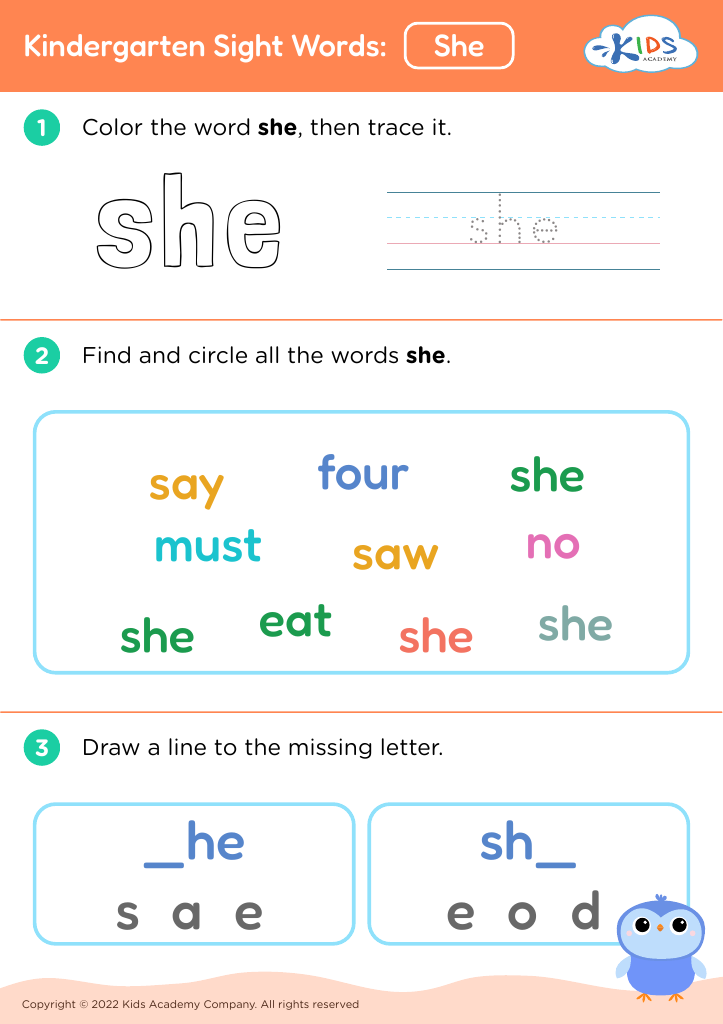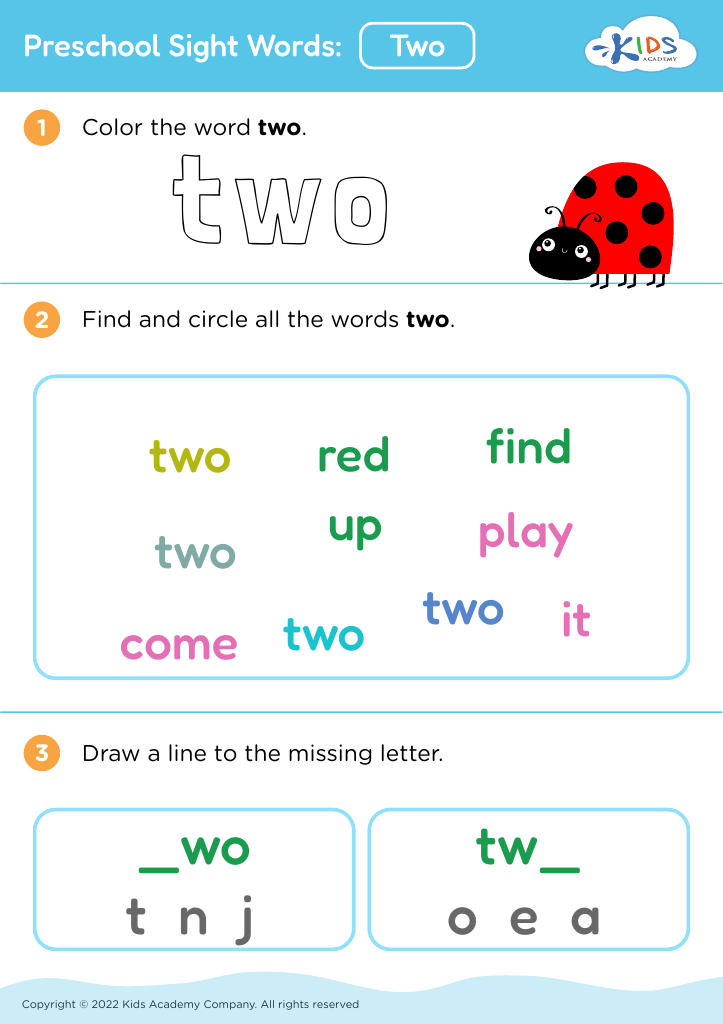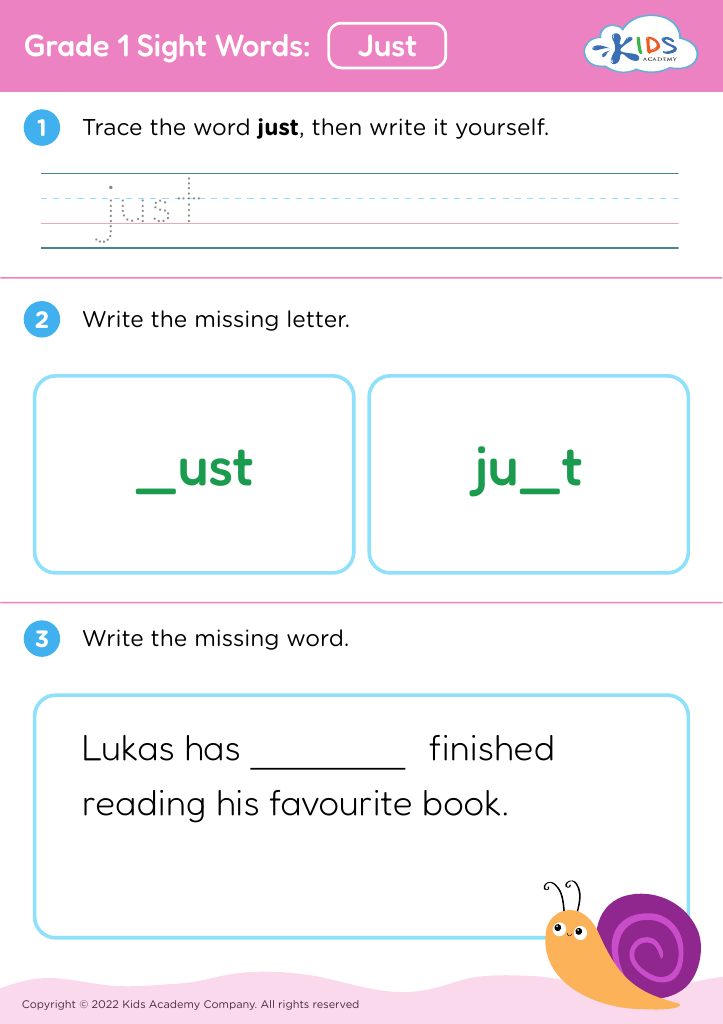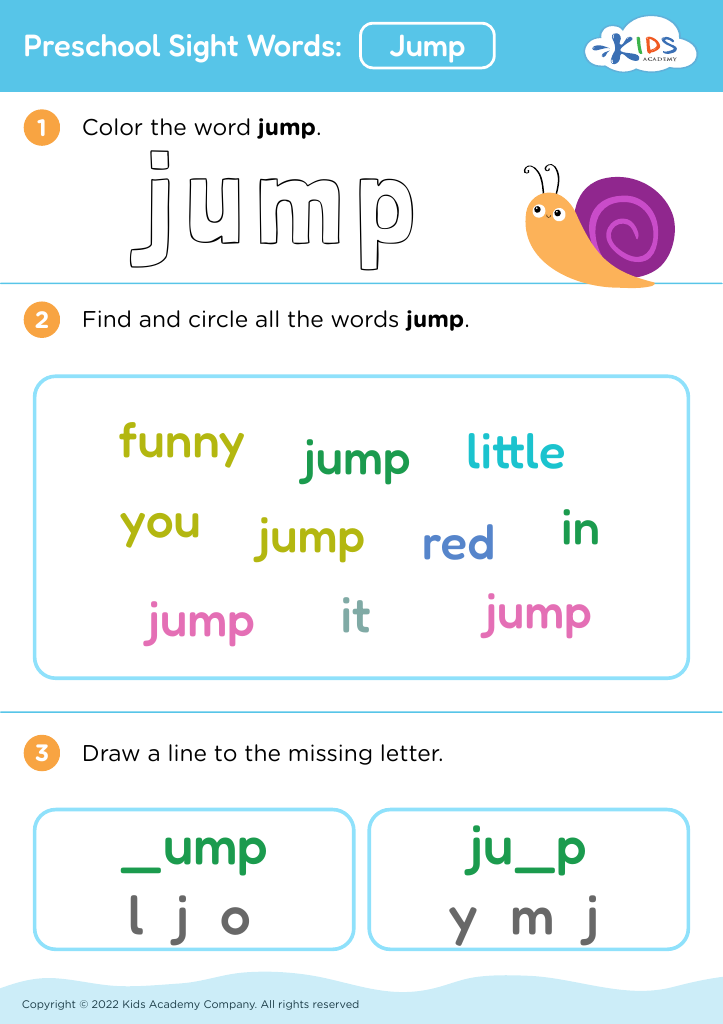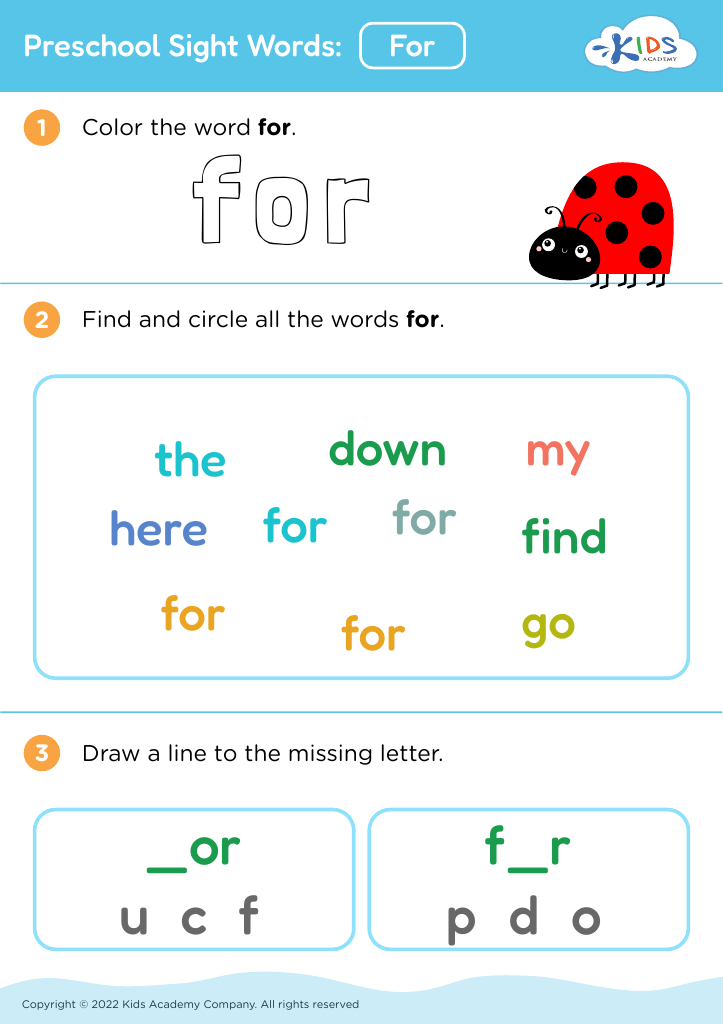Recognizing shapes Worksheets for Ages 4-6
13 filtered results
-
From - To
Explore our "Recognizing Shapes Worksheets for Ages 4-6," designed to engage young learners in a fun and interactive way! These worksheets help children identify, compare, and sort various shapes, fostering essential early math skills. Each activity is tailored to capture the imagination of preschool and kindergarten kids, making learning shapes enjoyable and effective. With colorful illustrations and age-appropriate challenges, our worksheets encourage critical thinking and visual recognition, laying the groundwork for future academic success. Perfect for home or classroom settings, equip your little ones with the skills they need as they embark on their educational journey. Start shaping their knowledge today!
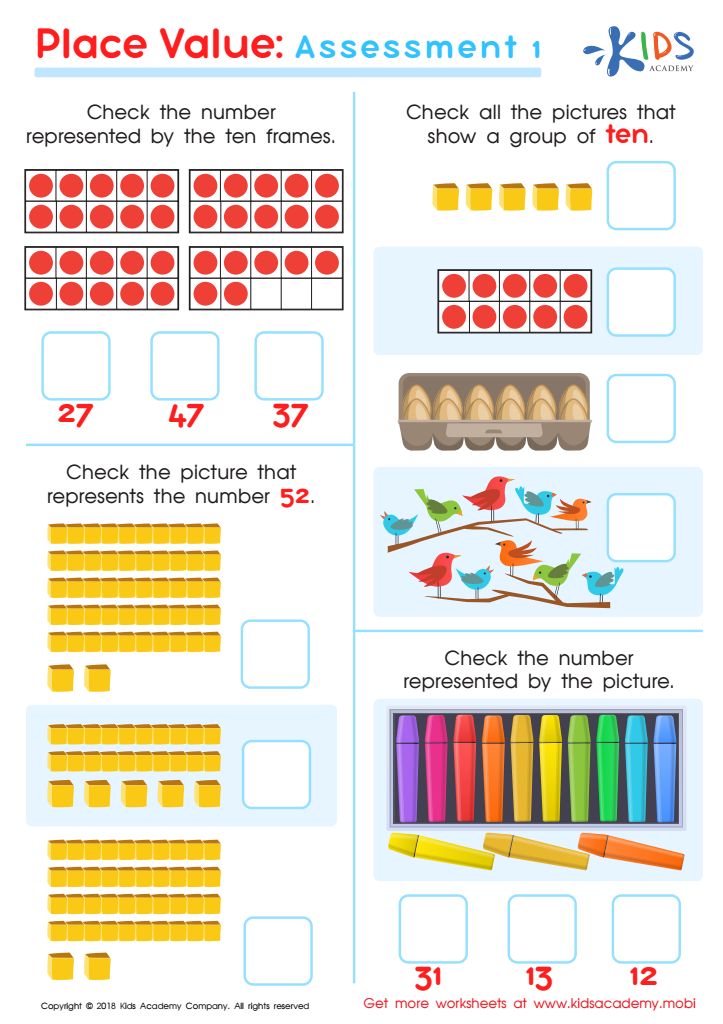

Place Value: Assessment 1 Worksheet


Lines of Symmetry Printable


Geometry: part 1 Worksheet
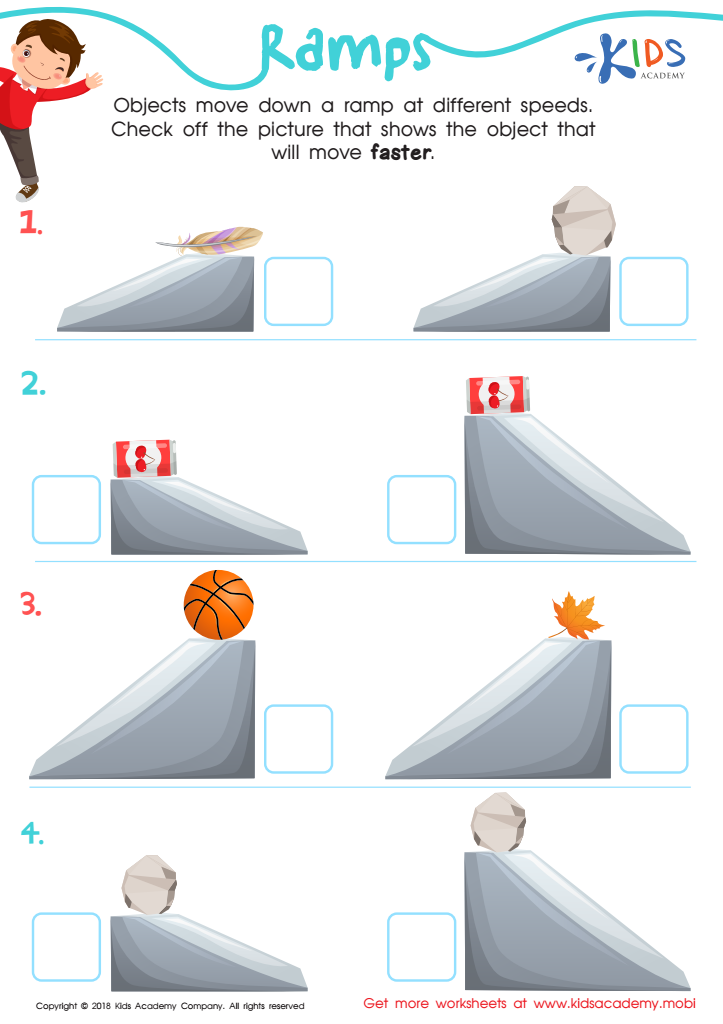

Ramps Worksheet
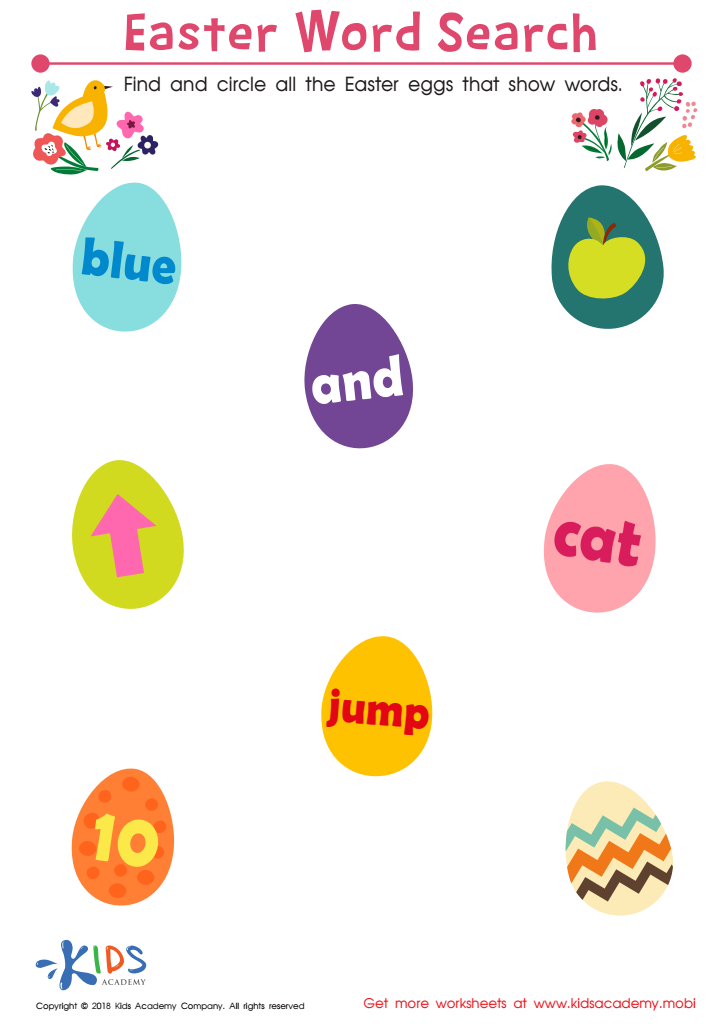

Easter Word Search Worksheet
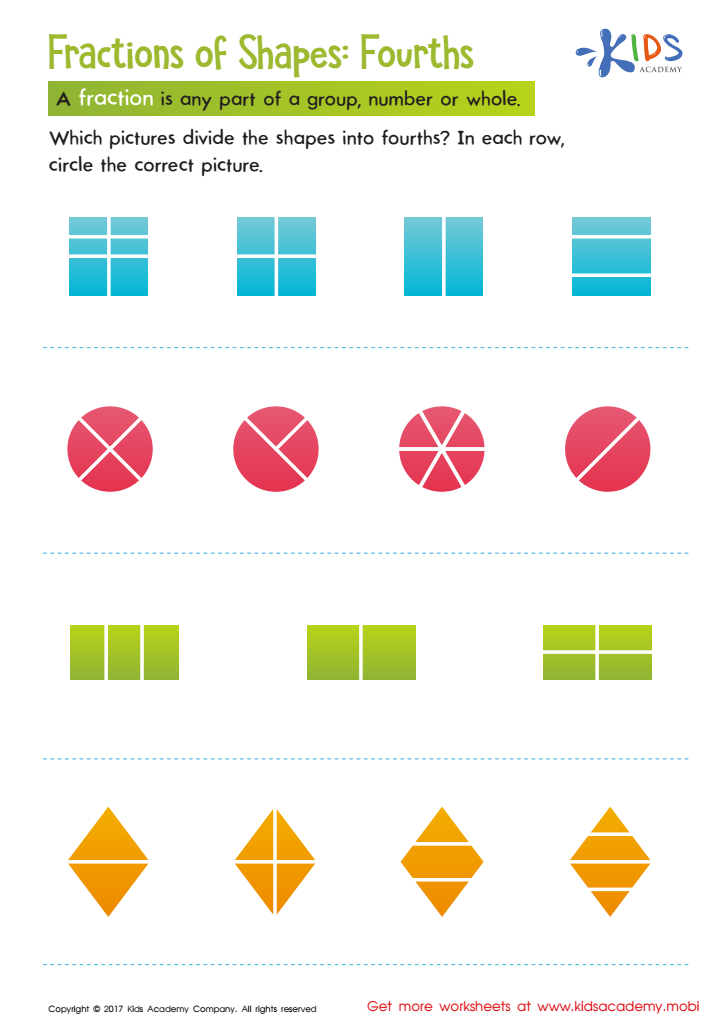

Fractions of Shapes Worksheet
Recognizing shapes is a foundational skill for children aged 4-6 that plays a crucial role in their cognitive development. First, it enhances their spatial awareness, enabling them to understand how objects relate to each other in the environment. This skill is essential not only in identifying shapes but also in navigating the world around them, leading to safer exploration and play.
Moreover, recognizing shapes is integral to mathematical comprehension. Understanding basic shapes lays the groundwork for more complex concepts, such as geometry, measurement, and problem-solving. When children learn to identify and categorize shapes, they are honing their analytical skills, making connections between visual information and verbal language.
Socially and emotionally, engaging with shapes encourages creativity through play. Activities involving shapes, like building blocks or drawing, promote teamwork and communication, as children share ideas and collaborate on projects.
Lastly, recognizing shapes ties into language development; children learn new vocabulary related to shape names and properties, which enriches their linguistic skills. As a result, recognizing shapes allows teachers and parents to foster well-rounded development in their children, setting the stage for a lifetime of learning and curiosity.
 Assign to My Students
Assign to My Students



